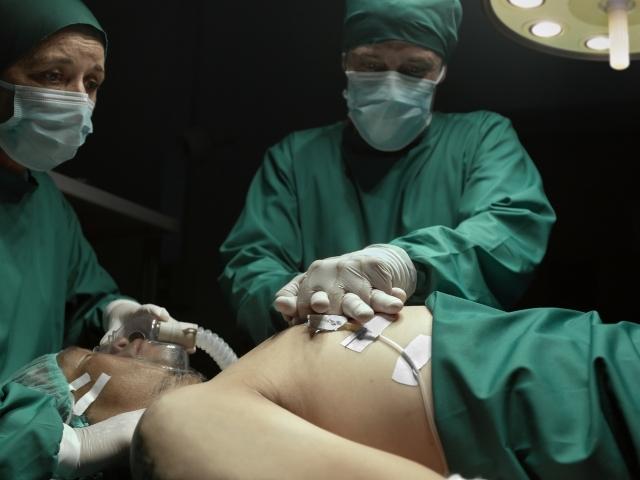- 374-C, Amrapali Circle, Vaishali Nagar, Jaipur
Cardiac Arrest
Cardiac Arrest
Cardiac arrest is a serious cardiac condition that necessitates prompt medical attention and intervention. It involves an abrupt loss of heart function, where the heart either stops beating or beats too quickly, disrupting blood flow to the brain and the entire body. Consequently, individuals experiencing cardiac arrest collapse and become unresponsive.
Each heartbeat is triggered by an electrical impulse that the heart sends. If this electrical pattern changes abruptly, it can cause an irregular heartbeat, which can lead to the cessation of heart function. As a result, the heart cannot supply oxygen-rich blood to the brain and other vital organs. Without immediate treatment, cardiac arrest can be fatal.


Cardiac Arrest Symptoms
Signs and symptoms of cardiac arrest are sudden and severe, including shortness of breath, vomiting, weakness or fatigue, heart palpitations, and sudden collapse. Emergency care is needed if there is no pulse, chest pain, absence of breathing or gasping sounds, and unresponsiveness to touch or sound.
Cardiac Arrest Causes
Cardiac arrest usually occurs suddenly and is often caused by irregular heart rhythms or arrhythmia, which is due to the heart's electric impulses not working correctly. The most common type of arrhythmia during cardiac arrest is ventricular fibrillation, which is characterized by rapid or erratic electrical impulses in the heart's lower chamber. Some heart conditions that can increase the risk of cardiac arrest include coronary artery disease (CAD), valvular heart disease, cardiomyopathy, congenital heart disease, and electrical abnormalities in the heart's system. CAD, in particular, is a major cause of cardiac arrest, as it can block or damage blood vessels that supply blood, oxygen, and nutrients to the heart.
Diagnosis of Cardiopulmonary Arrest
Following immediate medical attention, a series of tests and diagnoses may be conducted by the doctor to determine the underlying cause of cardiac arrest. These tests may include:
Chest X-ray: This test helps the doctor examine the size and shape of the heart and blood vessels.
Nuclear stress test: This test involves injecting radioactive material into the bloodstream during a stress test. A special camera is then used to detect the material moving through the heart and lungs.
Coronary angiography: This test uses X-ray imaging to check the blood vessels of the heart. A dye is injected into the arteries using a catheter, and the results are reviewed on an X-ray screen during the test.
Blood tests: These tests are performed to check for enzymes or any heart attack, and to check for fats, lipid profile, cholesterol levels, minerals, and chemicals present in the body.
Electrocardiogram (ECG): This test is conducted to check the speed and rhythm of the heart using an electric current.
Echocardiogram: This test is used to examine the damaged part of the heart. During the test, sound waves are used to capture an image of the heart.
Intracardiac electrophysiology study (EPS): This test helps check the electrical signal functions of the heart and detect any irregular heartbeats.
Cardiac Magnetic Resonance Imaging (MRI): This test provides a 3D image of the heart.
Cardiac catheterization: This test helps determine if the arteries of the heart are blocked or narrowed.
Cardiac Arrest Treatment
Immediate medical attention is essential to restart the heart and restore the regular rhythm during a cardiac arrest. Treatments may include: cardiopulmonary resuscitation (CPR) and defibrillation to jumpstart the heart. Afterward, to prevent future cardiac arrest, the doctor may recommend medication such as anti-arrhythmic drugs, beta-blockers, blood thinners, nitrates, or surgical procedures such as coronary angioplasty, implantable cardioverter-defibrillator (ICD), or coronary bypass surgery.
Factors to Increase the Risk of Disease
Cardiac arrest is more likely to occur if a person has certain risk factors. These include obesity, diabetes, smoking, high blood pressure or cholesterol, obstructive sleep apnea, substance abuse, and a previous heart attack. Additionally, being male, experiencing high levels of stress, having an inactive lifestyle, lacking exercise, and having a family history of heart disease can also increase the risk of cardiac arrest.
Prevention of Circulatory Arrest
Preventing cardiac arrest is possible through various measures, such as quitting smoking, adopting a healthy diet, shedding excess weight, managing stress, limiting alcohol intake, engaging in regular physical activity, and monitoring heart conditions.
Complications of Cardiac Arrest
Severe complications can arise from cardiac arrest, such as heart problems, brain injury, infections, and lung conditions.
Prognosis or Outlook For Patients
Survival rates for cardiac arrest are generally low, but prompt medical intervention can increase the chances of survival. The prognosis for individuals who have experienced cardiac arrest in the long term depends on the underlying cause, and it's important to work closely with medical professionals to minimize the risk of future cardiac events.
